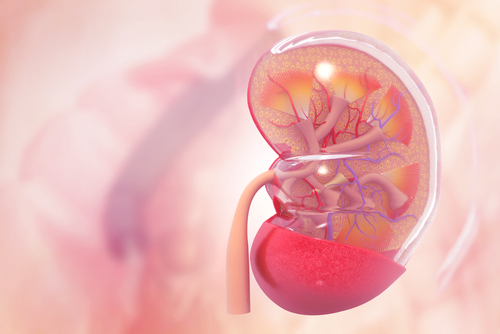Early Onset of Renal Arteriosclerosis, Hardening of Kidney Arteries, Found in Lupus Nephritis, Study Shows
Written by |

Hardening of the kidney arteries, a condition called renal arteriosclerosis, is detected two decades earlier in people with lupus nephritis compared with healthy individuals, a study shows.
The study, “High Burden of Premature Arteriosclerosis on Renal Biopsies in Incident Lupus Nephritis,” was published in the journal Arthritis Care & Research.
People with lupus nephritis, a common and serious kidney inflammation caused by systemic lupus erythematosus (SLE), have an increased risk of cardiovascular disease. However, it remained unknown whether renal arteriosclerosis is an early event in patients with lupus nephritis.
To learn more, researchers at the University of Wisconsin–Madison examined kidney biopsies from people with lupus nephritis for signs of renal arteriosclerosis. They then compared the prevalence of this complication between those with lupus nephritis and published data from healthy donors.
In total, they analyzed 189 patients who underwent kidney biopsy between 1994 and 2017 at the University of Wisconsin Hospital and Clinics. Median age at the time of the biopsy was 25 years. Among these individuals, 78% were female, 73% were Caucasian, 17% were from other minority races, and 10% had missing race data. About a third (34%) had more than one risk factor in the modified atherosclerosis cardiovascular disease scale, which measures the risk for a cardiovascular event.
The results showed that 41% of patients had active, proliferative lupus nephritis and 38% had chronic disease. Almost half (49%) were diagnosed with lupus nephritis within two years of being diagnosed with SLE.
According to the biopsy, 41% of lupus nephritis patients had changes to the renal arteries. In addition, 31% had renal arteriosclerosis and 12% had lesions of small arteries resulting in a thickening of the vessel wall, a condition called hyaline arteriolosclerosis.
The analysis found that 40% of patients ages 30 and older had renal arteriosclerosis, according to the biopsy reports. But based on the standard Banff criteria, this percentage increased to more than 50%.
More than 10% showed moderate-to-severe arteriosclerosis signs. The researchers also found an increasing prevalence of renal arteriosclerosis with older age in people with lupus nephritis. Among those in their 60s, one in three patients had moderate-to-severe disease.
Importantly, the first signs of any arteriosclerosis were detected two decades earlier in the group with lupus nephritis compared with healthy kidney donors of the same age. Specifically, this prevalence was similar in patients in their 30s and healthy controls in their 50s (41% vs. 44%). A similar prevalence also was found between people with lupus nephritis in their 40s and health individuals in their 60s (52% vs. 51%).
Moderately severe arteriosclerosis was five-fold higher in patients ages 60-69 than in age-matched healthy individuals (33 vs. 6%), according to the researchers.
Being older than 30 and having chronic lupus nephritis were both predictors of arteriosclerosis in the kidneys, the analysis found.
In a subgroup of 43 patients with a mean age of 31 years at lupus nephritis diagnosis, the analysis also showed that more than 50% of the original biopsy reports missed kidney arteriosclerosis, and almost 40% of all reports lacked details on arterial changes or arteriosclerosis.
“We found that renal arteriosclerosis appeared in LN [lupus nephritis] patients two decades before their healthy peers,” the researchers concluded. “Despite the high specificity of renal arteriosclerosis in current biopsy reports, we found significant sensitivity gaps (>50%) in routine pathology reporting on renal arteriosclerosis in LN biopsies.”
As such, these findings support the need to use the Banff renal arteriosclerosis criteria in all biopsies assessing lupus nephritis, the investigators said.




